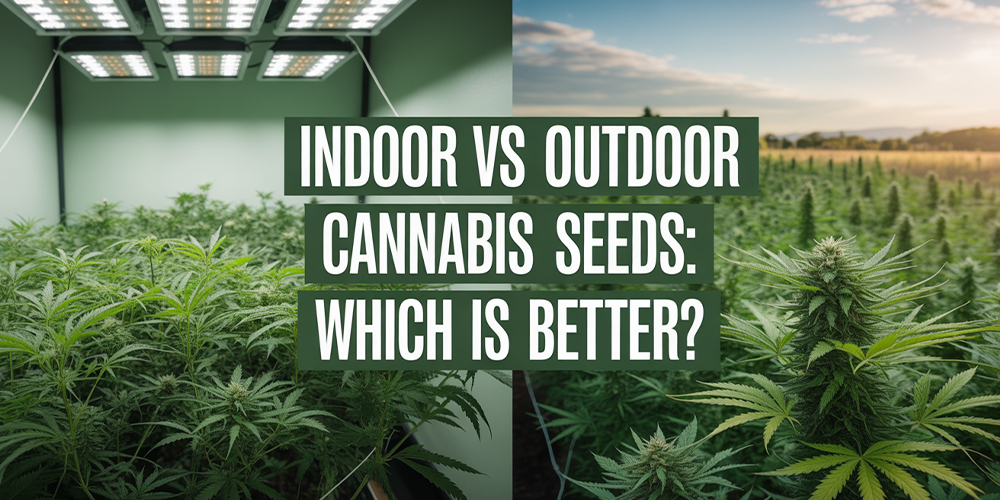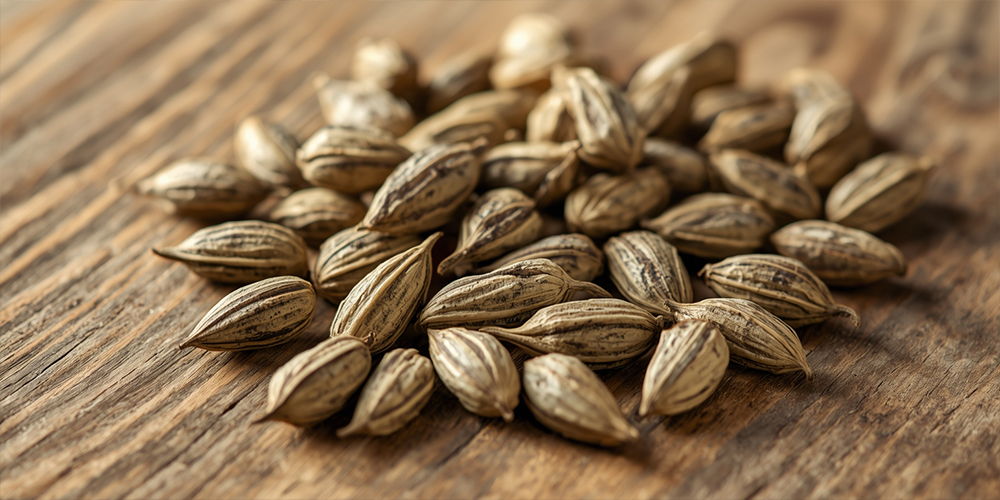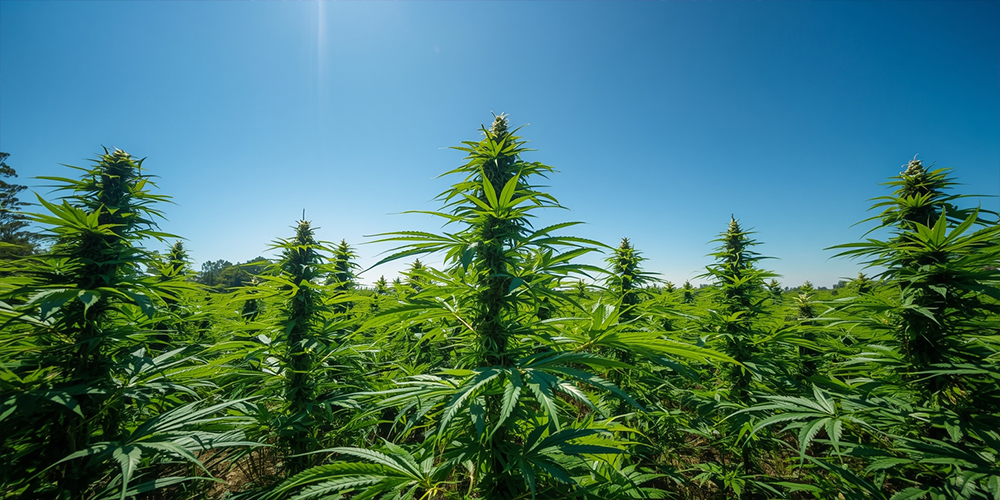
Home » Indoor vs Outdoor Cannabis Seeds: Which Is Better?
Indoor vs Outdoor Cannabis Seeds: Which Is Better?
When it comes to cannabis cultivation, one of the most important decisions growers face is whether to use seeds best suited for indoor or outdoor environments. The choice influences yield, cost, potency, and even legal considerations. In Australia, where climates range from tropical to alpine, this decision carries added weight.
This article explores the key differences between indoor and outdoor cannabis seeds, with a special focus on Australia’s unique growing conditions. We’ll compare pros and cons, seed types, regional suitability, costs, yields, and environmental impacts to help you decide which approach aligns with your goals.
Cannabis Seed Types & Genetics
Not all seeds perform equally indoors and outdoors. The three main categories are:
Feminized Seeds
- Bred to eliminate male chromosomes, producing only female plants.
- Best for: Indoor grows where space is limited and every plant must produce buds.
Autoflowering Seeds
- Flower automatically after a set time, regardless of light cycle.
- Best for: Outdoor grows in Australia’s unpredictable climates; short life cycle helps avoid seasonal issues.
Photoperiod Seeds
- Depend on light cycles (e.g., 12 hours dark) to flower.
- Best for: Indoor grows with precise light control, or outdoor grows in regions with long summers (southern Australia).
👉 Takeaway: Autoflowers are resilient outdoors, feminized seeds shine indoors, and photoperiods thrive where light cycles can be manipulated or predictably long.
Indoor vs Outdoor: Side-by-Side Comparison
| Factor | Indoor Seeds | Outdoor Seeds |
| Yield (per m²) | 400–600 g (controlled) | 500–1,200 g (depends on season/plant size) |
| Setup Cost | High (lighting, ventilation, rent) | Low (soil, water, nutrients) |
| Running Cost | High (electricity, maintenance) | Low to moderate |
| Climate Control | Full control | Weather-dependent |
| Pest/Disease Risk | Lower, but still possible | Higher (mold, insects, wildlife) |
| Potency & Terpenes | Often higher THC; uniform results | Strong terpene expression; variable THC |
| Harvests per Year | Multiple (year-round indoors) | One (seasonal outdoors) |
| Sustainability | Energy-intensive | Eco-friendlier |

Indoor Cannabis Seeds: Pros & Cons
Pros:
- Controlled environment (light, humidity, temperature).
- Consistent quality and higher cannabinoid levels.
- Year-round harvests possible.
- Compact strains fit small spaces.
Cons:
- High electricity and equipment costs.
- Legal risks without licensing.
- Limited plant size compared to outdoor grows.
Best Indoor Seed Traits:
- Bushy, compact plants.
- Short flowering periods.
- Strains optimized for high THC potency.
If you want specific strain recommendations, explore our article on Best Cannabis Seeds for Indoor Growing.

Outdoor Cannabis Seeds: Pros & Cons
Pros:
- Natural sunlight and free energy.
- Larger plants, higher yields per plant.
- Environmentally sustainable.
- Less expensive to set up and maintain.
Cons:
- Limited to one harvest per year.
- Higher risk of pests, mold, and unpredictable weather.
- Regional climate restrictions (frost, heat, humidity).
Best Outdoor Seed Traits:
- Mold-resistant strains.
- Tall, vigorous plants.
- Autoflowers for shorter growing seasons.
For a detailed guide on strains that thrive in Australia’s conditions, see our article on Best Cannabis Seeds for Outdoor Growing.

Regional Growing Considerations in Australia
Australia’s climate varies dramatically, and seed choice should match local conditions:
- Tropical North (QLD, NT): Autoflower or mold-resistant strains are ideal due to humidity and seasonal rains.
- Arid Interior (WA, SA, NT): Seeds should be heat-tolerant and drought-resistant; indica hybrids often do well.
- Temperate South (VIC, TAS, NSW south): Photoperiod seeds thrive thanks to longer summers and cooler nights.
- Alpine Zones (VIC highlands, TAS): Autoflowers or fast-flowering strains to avoid early frost.
👉 Takeaway: In Australia, outdoor success depends heavily on local climate and seed genetics.
Greenhouse / Hybrid Options
Many Australian growers use greenhouses or shade houses as a middle ground:
- Protects plants from pests and weather extremes.
- Allows natural sunlight while reducing energy use.
- Works well with both photoperiod and autoflowering seeds.
Best Greenhouse Seed Traits:
- Medium-sized plants.
- Flexible flowering times.
- Resistant to humidity fluctuations.
Cost & Yield Comparison
Indoor (Australia, per grow cycle):
- Setup: AUD $2,000–$5,000 (lights, fans, tents, meters).
- Electricity: AUD $300–$600/month.
- Yield: 400–600 g/m² every 3–4 months.
Outdoor (Australia, per season):
- Setup: AUD $300–$1,000 (soil, pots, nutrients).
- Maintenance: minimal ongoing costs.
- Yield: 500 g to 1.2 kg per plant, depending on climate.
👉 Takeaway: Indoor is more predictable but costly, while outdoor offers scale and sustainability.
Environmental Impact
- Indoor: Heavy reliance on electricity (especially in coal-powered regions). High carbon footprint but water usage can be recycled.
- Outdoor: Uses natural sunlight, less energy-intensive, but depends on rainfall and may stress local ecosystems.
Quality, Potency & Flavor
- Indoor: Higher THC, consistent potency, often visually “prettier.”
- Outdoor: More complex terpene profiles, sometimes less THC but more nuanced flavors.
- Consumer Preference: Many Australian patients value terpene-rich outdoor strains for medicinal effects, while recreational demand (globally) often leans toward high-THC indoor buds.
Seed Acquisition & Quality Tips
- Check legality: only licensed cultivators can legally acquire seeds in Australia.
- Import rules: permits from the ODC and biosecurity authorities are mandatory.
- Seed quality checks:
- Dark, tiger-striped seeds = mature.
- Hard outer shell = viable.
- Simple germination test: place seed in damp paper towel; viable seeds sprout in 2–5 days.
- Storage: cool, dry, dark conditions for long-term viability.
Conclusion
So, which is better: indoor or outdoor cannabis seeds? The answer depends on your goals, budget, and environment. Indoor seeds excel in controlled, small-scale, high-potency production, but require heavy investment. Outdoor seeds thrive in Australia’s diverse climates, offering natural growth and sustainability, but with greater environmental risks.
For most Australian cultivators, the best approach is to match seed genetics to your local climate and resources — and always remain compliant with ODC regulations. Whether you go indoor, outdoor, or a hybrid greenhouse approach, the right seed selection will determine the success of your grow.
FAQs
Q1: Is outdoor cannabis always weaker than indoor?
No. Outdoor plants can match or exceed indoor potency, especially with optimized genetics.
Q2: Can indoor seeds be grown outdoors?
Yes, but compact indoor strains may underperform outdoors unless climate is ideal.
Q3: What are the best strains for Australia?
Autoflowers in tropical zones; photoperiod in temperate south; mold-resistant hybrids in humid regions.


One Response